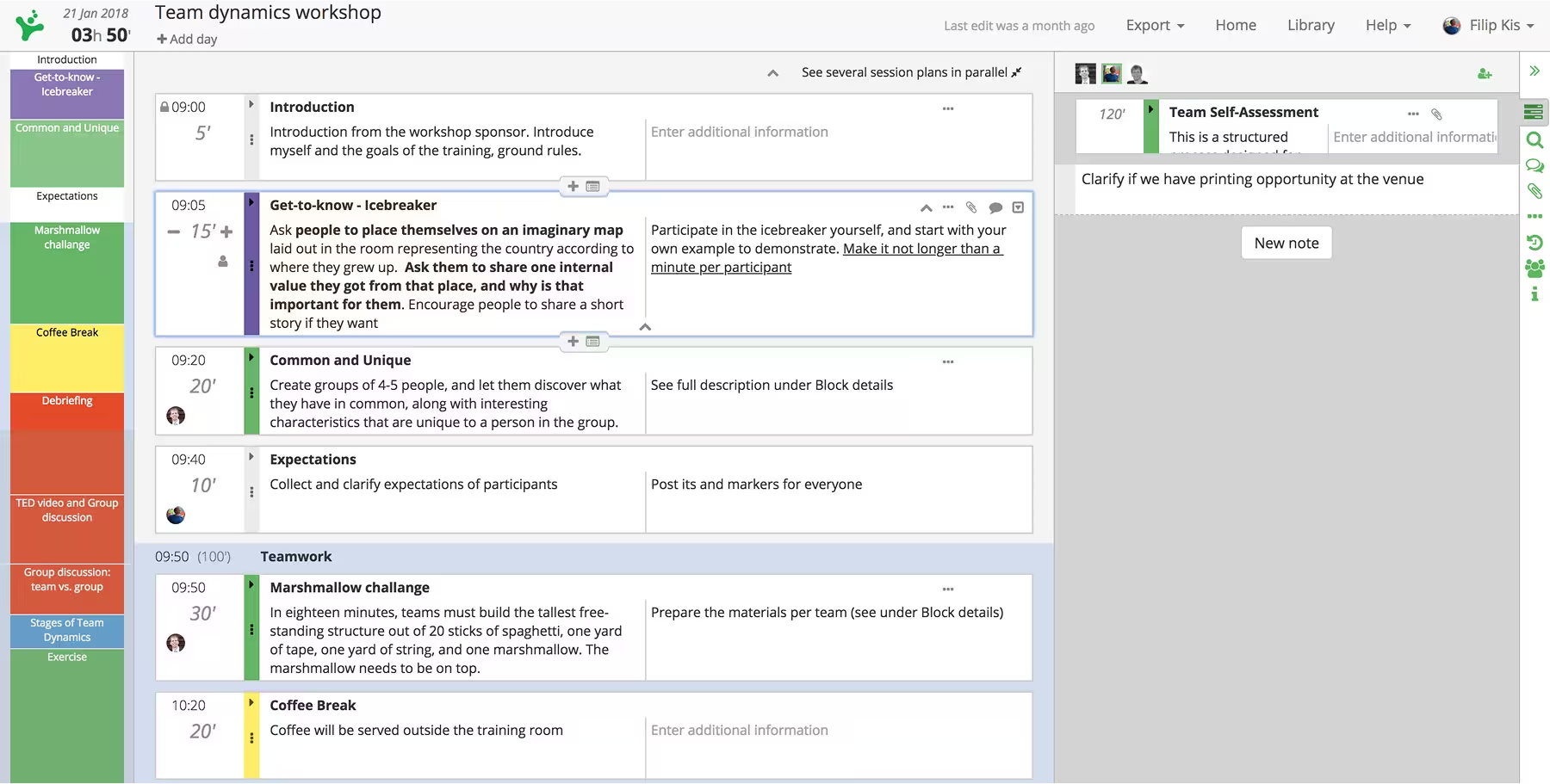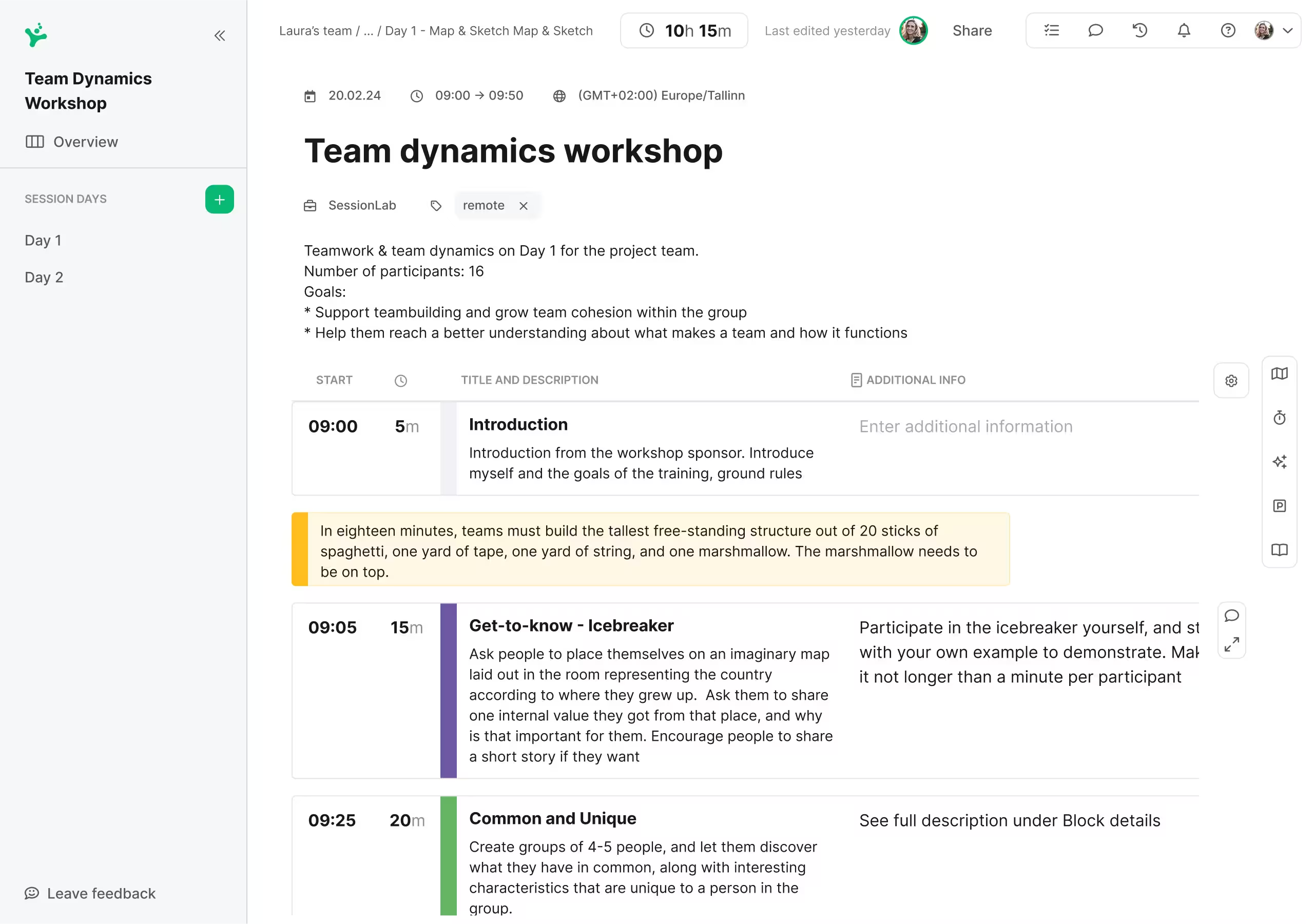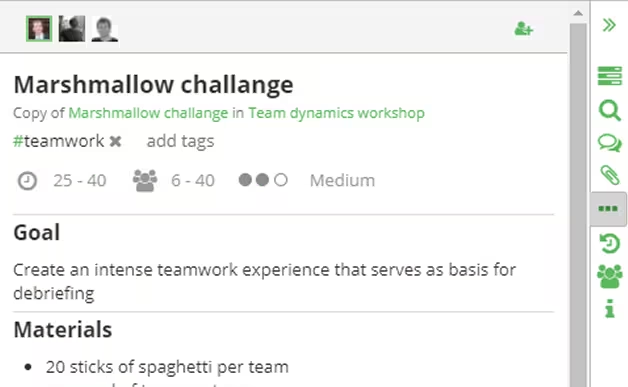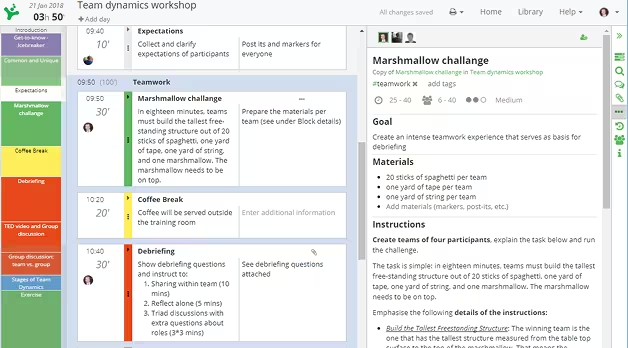A More Flexible SessionLab Planner
SessionLab is a workshop planning tool that makes it easy for facilitators, trainers & teams to design & run better meetings and workshops.


My Role
- Lead UX Designer
The Team
- 1 x UX Designer
- 2 x PM
My Contribution
- Competitor analysis
- User research
- Stakeholder alignment
- User stories
- Information architecture, card sorting
- Wireframing and prototyping
- UI design
- Usability testing
Tools Used
- Figma
- Figjam
- Notion
- Miro
Project Span
- Dec 2023 - Oct 2024
- 10 months
Process
Research
- Conceptual Research
- Competitor analysis
- User insights
- User interviews
Define
- Journey mapping
- HMWs
- Feature prioritization
- Card sorting / IA
- JTBD
Ideate
- Wireframing
- Stakeholder feedback
Build
- Prototyping
Verify
- Usability testing
Problem
Workshop facilitators are looking for greater flexibility in the planner to better meet their evolving needs.
To stay user-centric, the product manager and I process user insights weekly with Productboard, which helps us identify emerging trends in user needs and share them across the company.
Recent trends indicated a strong demand for more flexibility and customization in the planner, which is essential for a diverse user base including facilitators, trainers, coaches, teachers, e-learning designers, and content creators, each with unique requirements.

Solution
Developing the next version of the planner with a focus on flexibility and customization.
Early stages and research
Working closely with product management, I translated user insights into user stories. To address knowledge gaps among specific user segments, we scheduled additional interviews to deepen our understanding. We did this through the Jobs to Be Done framework. This research became our foundation, after which we held a workshop with the product team to explore ideas inspired by competing products and move into the project's solution phase.
Research findings
Two-column layout is not enough
In the starting version of the planner, the users had 2 columns per activity block – one for the title and description, and another one for any additional information. This was seen as limiting, as often there are more types of information the users would like to highlight in their sessions.


Important session details are hidden
A lot of the additional details about the session were hidden behind side panels. This was a challenge because often users rely on the session details (i.e., goals/problem statement, etc.) in order to work out the rest of their workshop. In other cases, additional collaborators missed these key details when working together on a session, as they didn't know to look to the side panels.
Planner feels outdated
Visually, the planner had aged over the decade since it was launched, and some users perceived the outdated look of the platform to reflect poorly on their own image and expertise. Additionally, more modern, visually pleasing interfaces are perceived as a better user experience too.

Paving the way for product strategy
Diving into user insights and exploring concepts for a more flexible future planner established a foundation for discussing our long-term product strategy. We agreed that reworking the planner’s information architecture would lay the groundwork for larger, impactful features that will enhance user success and deepen engagement with our tool.
The work
Given the project's large scope, impacting nearly every part of the existing planner, we prioritized breaking down the work into manageable, measurable phases.
We began with updates to the planner’s right-hand sidebar and the activity blocks. Once these changes were implemented and available in the staging environment, I conducted usability testing with both existing and new users to validate our approach and identify any challenges.
Next, we tackled the information architecture changes, which allowed us to prototype the new version and conduct another round of testing with both existing and new users. This iterative testing process led to a more polished version of the planner that we felt confident releasing to production.
Another crucial part of the project involved prioritizing and grouping user feedback. We introduced several new channels for users to share their thoughts, but rather than reacting to each piece individually, I focused on grouping feedback into patterns of emerging user challenges. This approach allowed us to discuss solutions in a more strategic way. It was essential not only for my own focus but also to ensure the team remained objective, as all user feedback is visible across the company.

Finally, after almost a year of work, we delivered a more flexible, modern planner that empowers our users to accomplish more while better meeting their needs. Large-scale, lengthy projects like this come with their challenges, but seeing the final result released to users is incredibly rewarding—especially when comparing it to where we began.
Learnings
Prioritization of work
Breaking large projects into manageable, measurable chunks is key to ensuring steady progress and maintaining focus. This approach allows us to prioritize effectively, tackle challenges incrementally, and make continuous improvements based on feedback.
User feedback patterns
Looking at user feedback holistically is key to identifying patterns and understanding broader user needs, rather than reacting to individual comments in isolation. This approach helps us prioritize changes that will have the most impact and ensures our decisions are aligned with the product strategy.
Usability testing – always a good idea
Usability testing is always valuable because it consistently reveals new insights, no matter how familiar we think we are with the product. Each testing session uncovers unexpected user behaviors or pain points, helping us refine the design in ways we hadn’t anticipated.
Celebrating progress
Staying motivated during a lengthy project can be challenging, which is why I find it important for the whole team to take time to celebrate progress and appreciate the impact we’ve made so far. Recognizing these achievements keeps morale high and shifts our focus from the remaining challenges to how far we've already come.